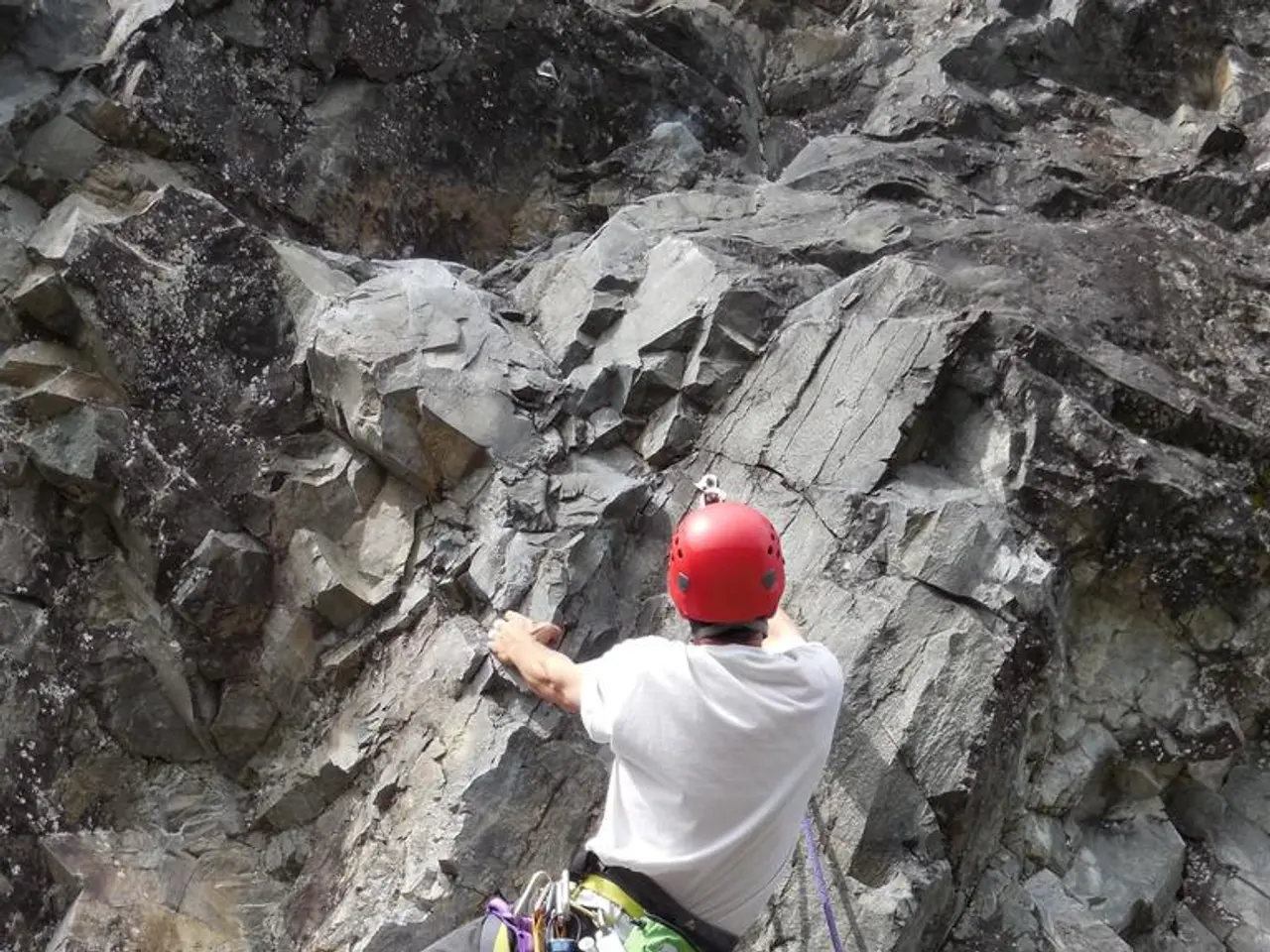Exhilarating Ascents on Towering Peaks: An Adrenaline-Pumping Journey Through the Heights
Preparing for Mountain Climbing: A Comprehensive Guide for Beginners
Mountain climbing, an exhilarating pursuit that takes you to new heights, is within reach for many enthusiasts. To embark on this thrilling adventure, focus on three key areas: fitness requirements, essential gear, and safety guidelines.
Fitness Requirements
Mountain climbing demands a high level of stamina, strength, endurance, and cardiovascular conditioning tailored to climbing-specific demands. Training should build aerobic capacity (e.g., running, cycling), strength in legs, core, and upper body, and endurance for load carrying by hiking with a weighted backpack. Specific exercises include pack-loaded uphill hiking, stair climbing, and strength training focused on lower body and core. Flexibility and injury prevention exercises are essential. Training typically takes several months to progressively increase hiking time, distance, and elevation gain to avoid injury and prepare effectively [1][2].
Essential Gear
For beginners, basic hiking gear like backpacks, trekking poles, and waterproof clothing is a must for trekking to summits without technical climbing. However, alpine climbs require technical equipment such as crampons, ice axes, harnesses, helmets, and ropework gear. Gear is crucial for moving safely on snow, ice, and steep slopes. Courses often provide some gear, but investing in appropriate personal equipment is recommended [3]. For technical climbs, having and knowing how to use equipment for ascending, rappelling, self-arrest, and securing with anchors is key [3][5].
Safety Guidelines
Understanding weather conditions, especially at high altitudes, is critical due to quick changes, cold temperatures, and hazards like snow, rain, and storms. Learning to interpret weather, recognize hazards, and make safe decisions in variable environments is fundamental [1]. Training in snow and glacier travel techniques such as self-arrest and safe rope travel helps reduce risks [3][5]. Taking guided courses or fundamentals classes is strongly advised to gain knowledge in hazard recognition, ropework, and moving on difficult terrain safely [3][5].
To get started, consider enrolling in beginner mountaineering courses that cover basic knots, ropework, snow travel techniques, and safety skills, such as the Intro to Mountaineering courses offered by expert guides [3]. Combine this with a structured fitness program that emphasizes climbing-specific conditioning [2]. Additionally, reading guides aimed at beginner climbers provides more tailored tips on physical and gear preparation [1].
Group expeditions strengthen teamwork and communication skills, essential for navigating the challenges of mountain climbing. Snow and ice coverage, key hazards, and seasonal shifts dramatically alter routes, with unstable snowpack, rockfall, and early storms being common issues. Alpine climbing requires boots half a size larger than usual, with moisture-wicking base layers, insulated mid-layers, and windproof shells for changing conditions.
Modern safety gear has expanded accessibility for beginners in mountain climbing. Essential safety equipment includes helmets, harnesses, layered clothing systems, GPS devices, satellite messengers, and bivvy sacks. Modern apps overlay real-time weather onto classic routes, but always carry a physical backup map. Identify key landmarks that guide navigation when fog rolls in or trails fade.
High-altitude adventures demand respect for thin air and acclimatization. Peak ascents foster personal growth and environmental awareness. Mountaineering includes diverse styles like ice climbing and via ferrata. Historical routes inspire today's adventure-seeking communities. Mixed terrain demands versatile skills, often requiring transitioning between ice patches and technical climbing sections.
Successful mountaineering begins with targeting specific peaks and routes that align with one's experience, studying elevation profiles, and recent trip reports to spot potential challenges before stepping onto the trail. Everest's Khumbu Icefall now melts faster due to climate change, creating unpredictable crevasses. Always plan escape paths and discuss alternatives with your team, as routes shift and flexibility becomes your greatest tool in wild areas.
Over 25 million people worldwide attempt mountain climbing annually. High-altitude systems create their own microclimates, requiring specialized mountain forecasts three times daily to check wind speed and lightning risk zones. Aerobic efficiency is key for mountain climbing preparation. Peak ascents foster personal growth and environmental awareness.
This combination of guided training, physical conditioning, and solid gear knowledge will prepare you to climb safely and confidently. Happy climbing!
[1] Mountain Climbing Preparation: A Comprehensive Guide for Beginners [2] The Ultimate Guide to Mountain Climbing Fitness [3] Mountaineering Courses for Beginners: What You Need to Know [4] The Essential Gear Guide for Mountain Climbing [5] Safety Guidelines for Mountain Climbing
Engaging in mountain climbing offers personal growth beyond the physical challenge, as it cultivates wisdom through understanding weather conditions, snow and glacier travel techniques, and recognizing hazards. A well-designed fitness regimen, tailored to climbing-specific demands, can boost both physical strength and mental fortitude, aiding in the pursuit of personal growth. Additionally, investing in essential gear, such as safety equipment, is crucial to ensure safety in sports like mountain climbing, promoting a sense of wisdom and preparedness for climbers.







